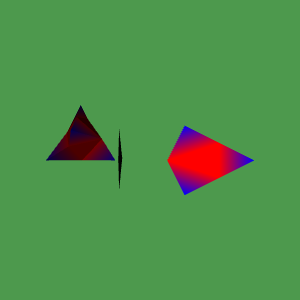ReadUnstructuredGrid
vtk-examples/CSharp/IO/ReadUnstructuredGrid
Description¶
This examples demonstrates how to read an unstructured grid (VTU) file.
An example data file (.vtu) for testing can be found in VTKData/Data/quadraticTetra01.vtu.
A tutorial on how to setup a Windows Forms Application utilizing ActiViz.NET can be found here: Setup a Windows Forms Application to use ActiViz.NET
Question
If you have a question about this example, please use the VTK Discourse Forum
Code¶
ReadUnstructuredGrid.cs
using System;
using System.ComponentModel;
using System.Windows.Forms;
using Kitware.VTK;
namespace ActiViz.Examples {
public partial class Form1 : Form {
public Form1() {
InitializeComponent();
}
private void renderWindowControl1_Load(object sender, EventArgs e) {
try {
string filePath = @"C:\VTK\vtkdata-5.8.0\Data\quadraticTetra01.vtu";
// reader
vtkXMLUnstructuredGridReader reader = vtkXMLUnstructuredGridReader.New();
if(reader.CanReadFile(filePath) == 0) {
MessageBox.Show("Cannot read file \"" + filePath + "\"", "Error", MessageBoxButtons.OK);
return;
}
reader.SetFileName(filePath);
reader.Update(); // here we read the file actually
// mapper
vtkDataSetMapper gridMapper = vtkDataSetMapper.New();
gridMapper.SetInputConnection(reader.GetOutputPort());
// actor
vtkActor gridActor = vtkActor.New();
gridActor.SetMapper(gridMapper);
// get a reference to the renderwindow of our renderWindowControl1
vtkRenderWindow renderWindow = renderWindowControl1.RenderWindow;
// renderer
vtkRenderer renderer = renderWindow.GetRenderers().GetFirstRenderer();
// set background color
renderer.SetBackground(0.2, 0.3, 0.4);
// add our actor to the renderer
renderer.AddActor(gridActor);
// reposition the camera, so that actor can be fully seen
renderer.ResetCamera();
}
catch(Exception ex) {
MessageBox.Show(ex.Message, "Exception", MessageBoxButtons.OK);
}
}
}
}
